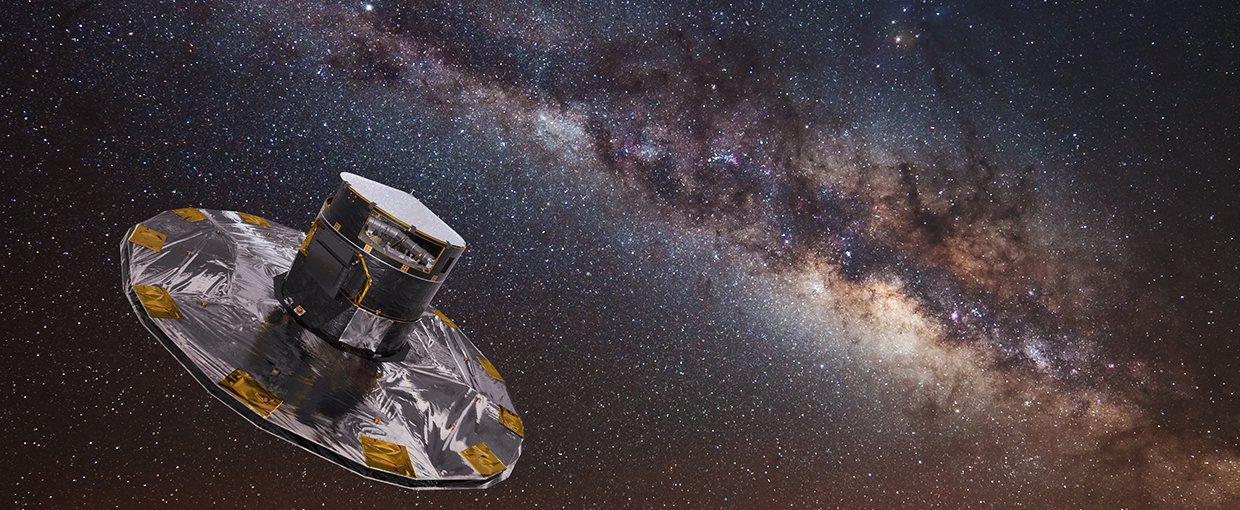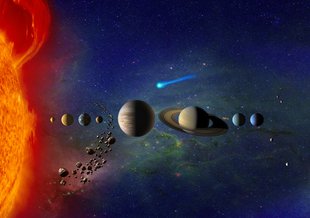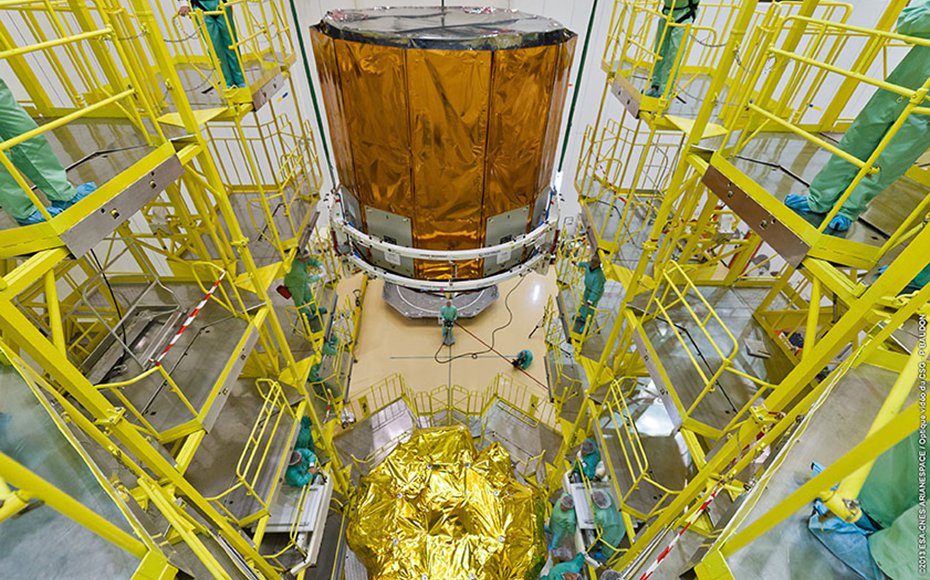- Launch Date December 19, 2013
- Arrival Date January 08, 2014
- Mission TypeFlyby/Space Telescope
- TargetThe Milky Way Galaxy
Mission Overview
The European Space Agency’s (ESA) Gaia telescope is an ambitious mission to chart a three-dimensional map of our Galaxy, the Milky Way, in the process revealing the composition, formation and evolution of the Galaxy. Gaia will provide unprecedented positional and radial velocity measurements with the accuracies needed to produce a stereoscopic and kinematic census of about one billion stars in our Galaxy and throughout the Local Group. This amounts to about 1 per cent of the Galactic stellar population.
Relevance to Astrobiology
With its all-sky survey of the position, brightness and motion of over one billion stars in our Milky Way galaxy, Gaia will provide a large dataset to search for exoplanets. These will be uncovered by monitoring tiny changes in a star’s position and motion caused by the gravitational pull of one or more planets around it, and by looking for dips in the stellar light caused by a planet transiting in front of its parent star.
Gaia will also map thousands of Solar System objects, primarily main belt asteroids circling the Sun between the orbits of Mars and Jupiter. With its ability to detect faint and fast-moving objects, it is expected that Gaia will also detect several thousand Near-Earth Objects (NEOs), which are thought to be comets and asteroids that have been nudged by the gravitational attraction of nearby planets into orbits that allow them to enter the Earth’s neighbourhood.
NASA Astrobiology Involvement
Data from Gaia informs numerous studies supported by the NASA Astrobiology Program. Gaia measures the position and motion of stars using a technique known as parallax, which involves looking at an object from different perspectives. From it’s position in space, Gaia is able to avoid atmospheric distortion when making its observations, and provide more precise estimates of stellar sizes. Ultimately, this helps in estimating the sizes of planets orbiting distant stars.
The Astrobiologists
Gaia data will contribute to exoplanet studies performed by researchers supported by elements of the NASA Astrobiology Program, including NExSS.













